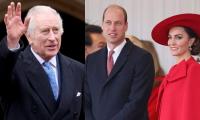The historical relationship between Afghanistan and Pakistan has been marked by a series of conflicts and diplomatic tensions despite the two being dominantly Muslim neighbouring countries with thousands of years of shared history and culture. The seeds of discord were sown as early as September 1947 when Afghanistan stood as the lone dissenting voice against Pakistan in the United Nations.
In September 1947, Afghanistan’s opposition to Pakistan in the UN set the stage for a prolonged contentious bilateral relationship. The relationship was further strained when the Afghan government raised the Pashtunistan flag in Kabul, coupled with support for proxies in Pakistan’s border regions. The Loya Jirga’s unilateral denouncement of treaties and the declaration of Pashtunistan that encompassed regions of Tirah and Razmak further intensified hostilities.
Afghanistan also enjoyed Indian support in both the Pashtunistan issue and their stance on the Durand line. Avinash Paliwal in his book ‘My Enemy’s Enemy’ claims that Indian intelligence officials were actively involved in arming the Baluch insurgents, and have quote one officer to have said, ‘We gave the Baloch everything, from money to guns, during the 1970s, everything’.
The early 1950s witnessed direct military confrontation between Afghanistan and Pakistan. The Afghan army’s attack on the Dobandi area in Balochistan aimed at isolating Chaman from Quetta showcased the gravity of the tensions. Pakistan adopted a go-slow approach on the trade transit routes while exerting economic pressure; the move was meant to convey to the Afghan leadership the growing discontent within Pakistan regarding the hostile nature of Afghanistan’s policy towards Pakistan.
The attempted assassination of PM Liaquat Ali Khan by an Afghan national, Said Akbar Babrak, further strained bilateral relations. In March 1955, Pakistan missions in Afghanistan became targets of attacks, marking an escalation in hostilities, while hoisting the Pashtunistan flag at Pakistan’s embassy in Kabul. The situation reached a boiling point in September 1960 when Afghan army troops and militias attacked Bajaur. However, the local residents with the support of the Special Services Group (SSG) forces successfully repulsed the assault.
The following year, the Afghan government supplied arms to proxies in Bajaur, but the Pakistan Air Force (PAF) thwarted their plans by destroying the ammunition depot, thereby rendering the proxies toothless. Threatening Afghans with retaliation, President Ayub Khan gave them a stern warning.
In 1964, the Afghan Loya Jirga reiterated support for Pashtunistan, adopting a more tempered stance this time. With a measured expression of support, the event subtly underscored Afghanistan’s enduring commitment to the Pashtunistan issue, contributing to the ongoing complexities in Afghan-Pakistani relations. As tensions escalated, diplomatic relations deteriorated, leading Pakistan to restrict transit trade with Afghanistan. The Afghan official gazette, in a provocative move, published the Pashtunistan flag, while simultaneously disseminating incendiary reports about alleged terrorist activities by Pashtunistan miscreants. Radio Kabul’s propaganda campaign reached its zenith, contributing to heightened tensions and worsening relations between Afghanistan and Pakistan.
The bloodless coup of 1973 in Afghanistan, which ousted Zahir Shah, Afghanistan renewed its support for Pashtunistan. That same year, in response to Afghanistan’s growing assertiveness, Zulfikar Ali Bhutto as PM created the ‘Afghan Cell’ in the Foreign Office to encounter propaganda from Afghanistan. The Afghan Cell proved to be highly effective in suppressing the covert activities of the Afghan government forcing them to go on the back foot.
From 1973 to 1978, Afghanistan provided shelter, training, and support to Baloch insurgents, further complicating the bilateral relationship. The period also saw Afghanistan becoming a hub for Indian interference in Pakistan using the issues of Pashtunistan. In November 1974, Kabul initiated a substantial military reinforcement along the Pakistan border, with assurances of increased Soviet military assistance. This support encompassed an array of resources, such as 1,170 tanks, over 6,000 pieces of artillery, transport vehicles, infantry equipment, radars, 40 Mig-21s, 40 Mig-27 aircraft, and combat helicopters. Daud privately asked New Delhi that it should militarily engage Pakistan in the east, and Afghanistan would fight in the west, (even though he ridiculed allegations of an India-Afghanistan nexus in public).
The depth of the Afghan president’s animosity was evident in his conspicuous absence from the ‘OIC Leaders Summit’ held in Pakistan. His decision to skip the summit signaled a deliberate and pointed diplomatic snub, underlining the strained relations between Afghanistan and Pakistan during that period.
The historical relationship between Afghanistan and Pakistan has been marked by a complex tapestry of conflicts, diplomatic tensions, and proxy rivalries that have endured for decades. The geopolitics of this region has been deeply influenced by the shadows of the Great Game and the pervasive involvement of external powers. From the early dissent in the UN to the Pashtunistan dispute, border conflicts, and the role of external actors, particularly India, the two neighbouring Muslim countries have navigated long-standing disputes marked by small periods of détente.
The writer is an independent researcher. He can be reached at: abdulniner09@gmail.com
Earth Day protests carry a vital message that is relevant 365 days a year. — AFP File Earth Day is celebrated every...
People walk along a market in Lahore on May 17, 2023. — AFP/FileMany of us had hoped that the general election...
Packs of freshly printed $20 notes are processed for bundling and packaging at the US Treasury's Bureau of Engraving...
People stand in line up as election officials check their ballot papers during voting general election at a polling...
Women show their voter identity cards as they stand in a queue before casting their votes in Agartala. — PTIThe 18th...
Former prime minister Imran Khan. — Instagram/ imrankhan.ptiAn old saying has it that “when you dance with the...







